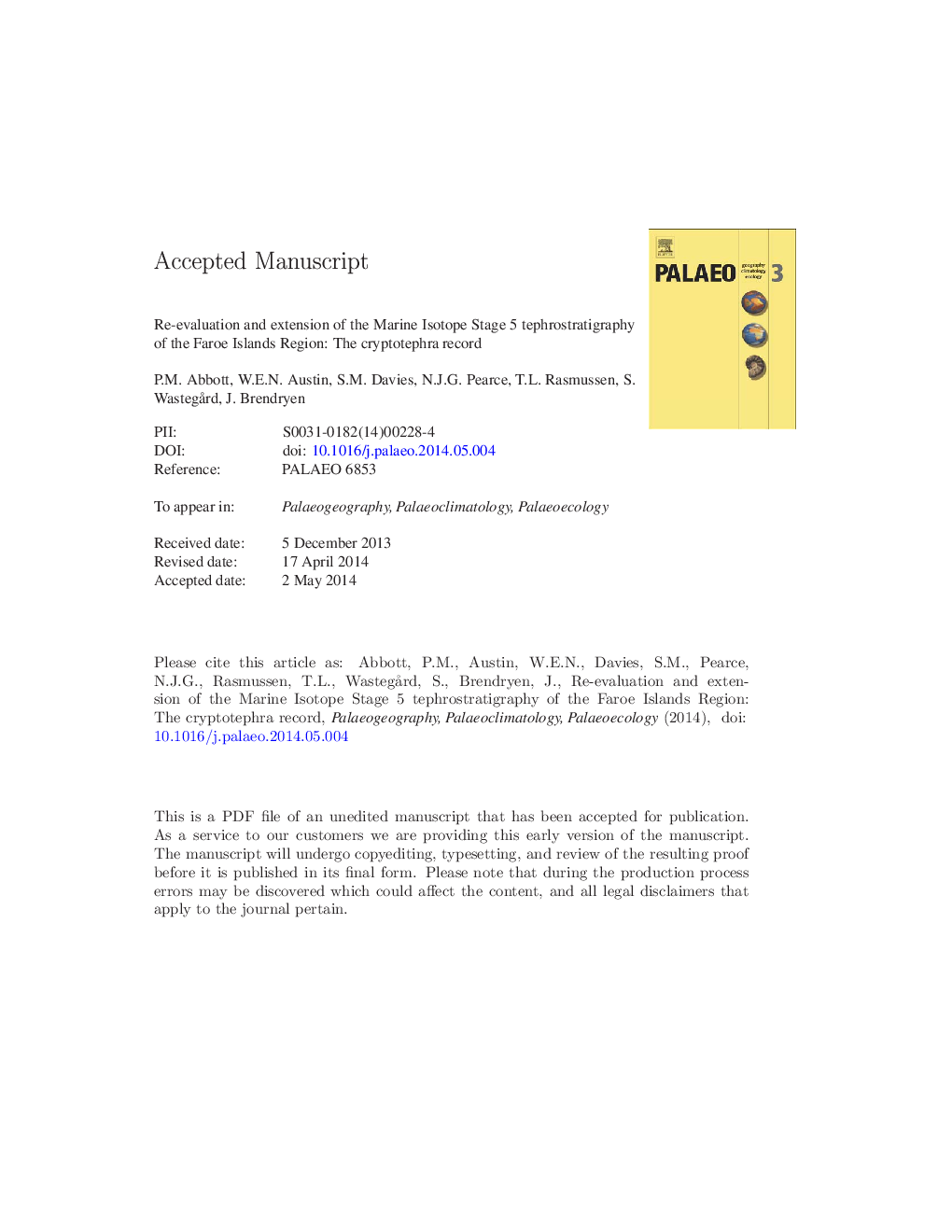| Article ID | Journal | Published Year | Pages | File Type |
|---|---|---|---|---|
| 6350091 | Palaeogeography, Palaeoclimatology, Palaeoecology | 2014 | 58 Pages |
Abstract
Previous studies of marine sequences from the Faroe Islands region have identified a series of coarse-grained tephra horizons deposited during Marine Isotope Stage (MIS) 5. Here we reassess the MIS 5 tephrostratigraphy of the Faroe Islands region and focus on the cryptotephra deposits preserved within the fine-grained fraction of marine core LINK 16. We also extend the record to encompass the late MIS 6 and early MIS 4 periods. A density separation technique, commonly used for tephra investigations in lacustrine settings but rarely applied to marine sediments, is utilised to explore the fine-grained material and EPMA and LA-ICP-MS are employed to determine the major and trace element composition of individual tephra shards. In total, 3 basaltic and 3 rhyolitic Icelandic cryptotephra deposits with homogeneous geochemical compositions are identified - all of which have the potential to act as isochronous tie-lines. Geochemical results highlight that the GrÃmsvötn volcanic system of Iceland is the predominant source of the basaltic horizons and the Ãraefajökull or Torfajökull systems are the likely sources of the rhyolitic deposits. Three of the horizons have been previously recognised in Faroe Islands region marine sequences, with two of these deposits traceable into a Norwegian Sea sequence. An early MIS 4 rhyolitic horizon is the most widespread deposit as it can be traced into the Norwegian Sea and to the south into a record from the Rockall Trough. Basaltic and rhyolitic horizons deposited during late MIS 6 have not been recognised in other sequences and represent new additions to the regional tephrostratigraphy.
Keywords
Related Topics
Physical Sciences and Engineering
Earth and Planetary Sciences
Earth-Surface Processes
Authors
P.M. Abbott, W.E.N. Austin, S.M. Davies, N.J.G. Pearce, T.L. Rasmussen, S. Wastegård, J. Brendryen,
